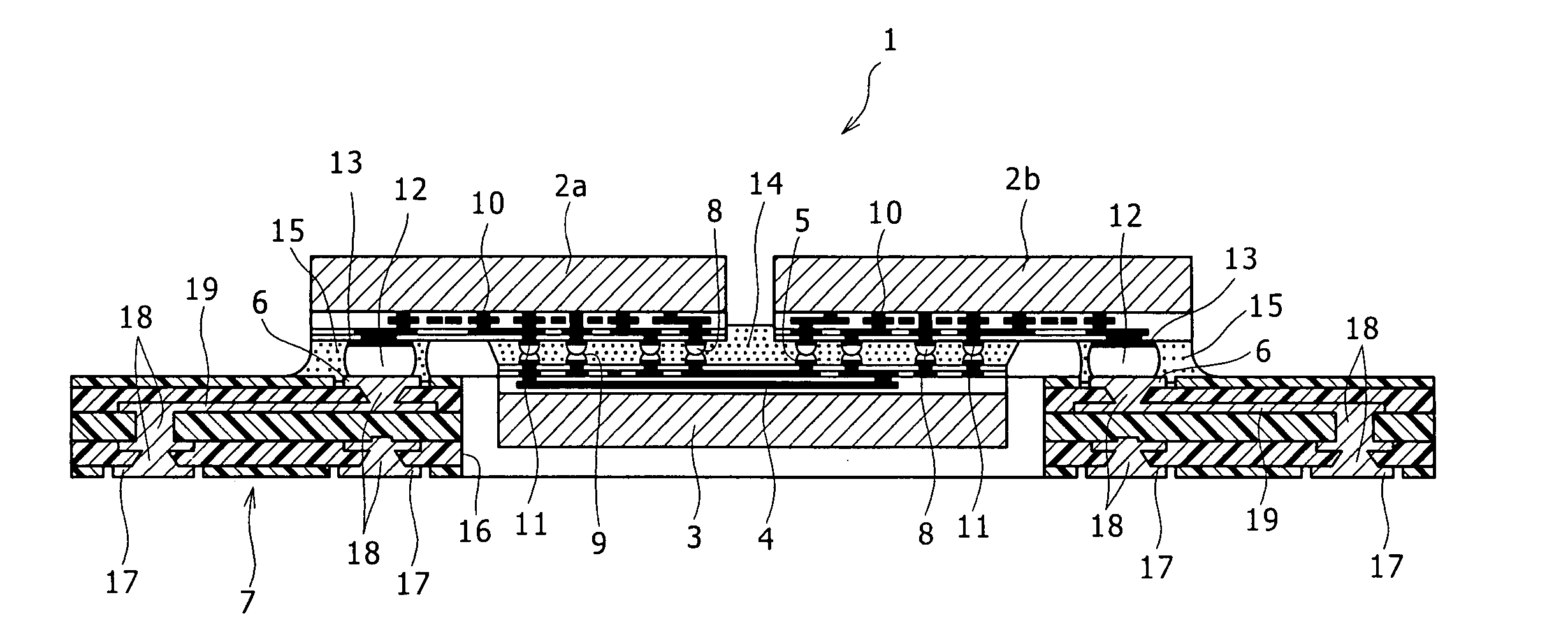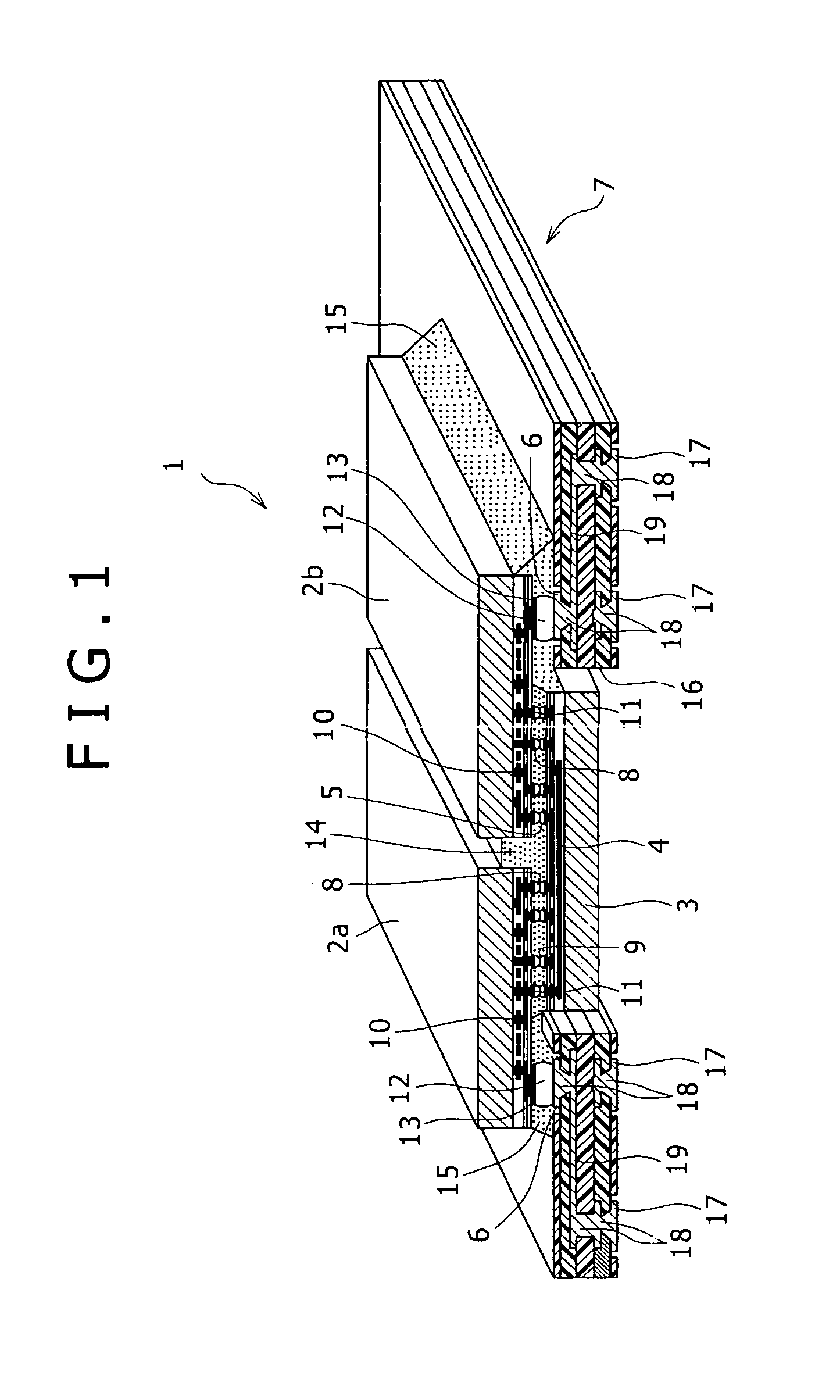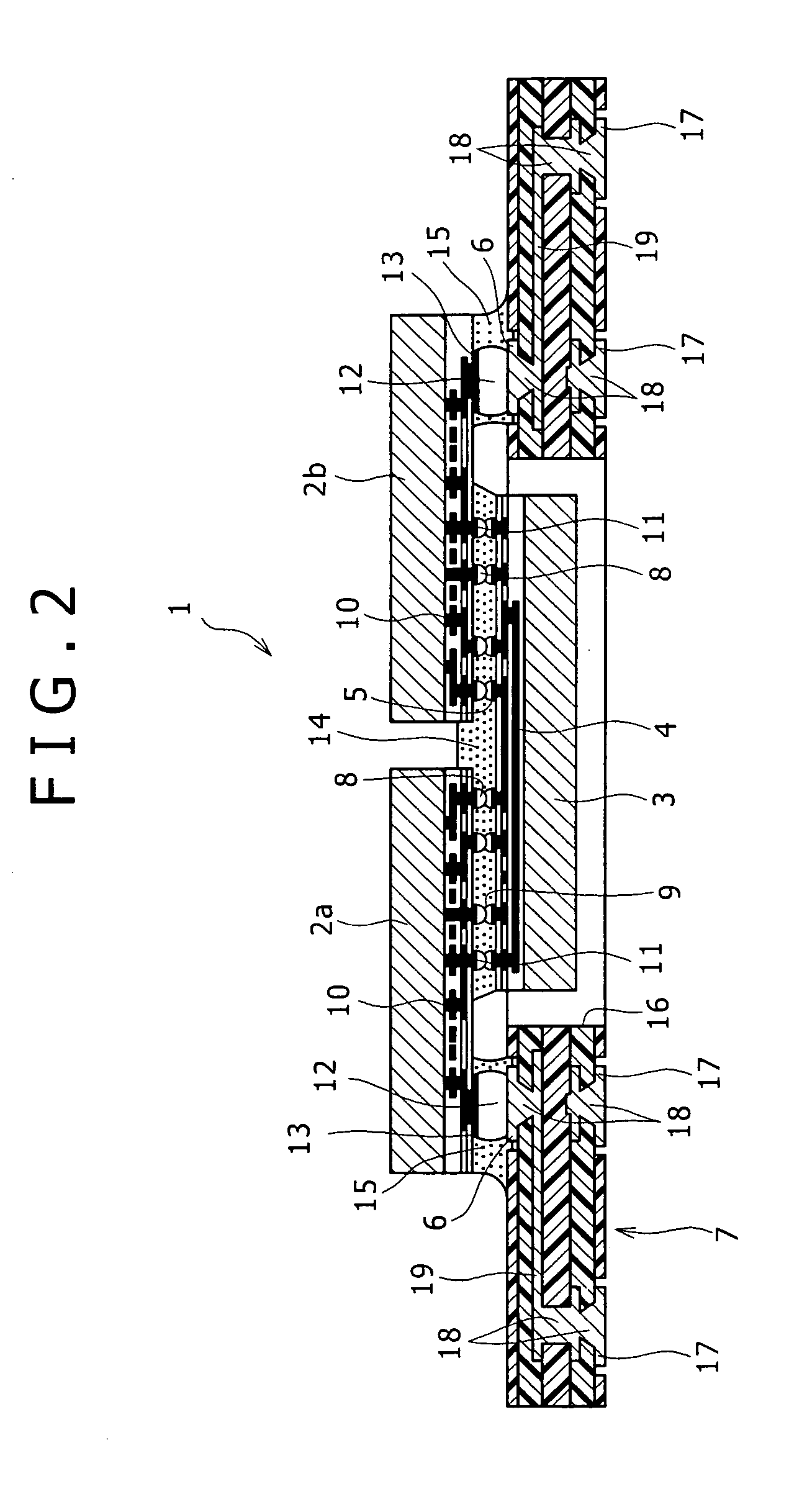Semiconductor device and method of manufacturing semiconductor device
a semiconductor and semiconductor technology, applied in semiconductor devices, solid-state devices, basic electric elements, etc., can solve the problems of high cost, increase of manufacturing costs of the entire semiconductor device, and large size of the silicon interposer substrate, so as to reduce the plane and reduce the size of the semiconductor substra
- Summary
- Abstract
- Description
- Claims
- Application Information
AI Technical Summary
Benefits of technology
Problems solved by technology
Method used
Image
Examples
first embodiment
[0045]FIG. 1 is a partially sectional perspective view illustrating a semiconductor device 1 according to a first embodiment of the present invention. FIG. 2 is a sectional view illustrating the semiconductor device 1.
[0046] The semiconductor device 1 includes a semiconductor substrate 3, a plurality of semiconductor chips 2a and 2b mounted on the semiconductor substrate 3, and a wiring board 7 connected to the semiconductor chips 2a and 2b.
[0047] The semiconductor substrate 3 has, on the same surface thereof, chip-to-chip interconnections 4 for electrically connecting the semiconductor chips 2a and 2b to each other, and a plurality of chip-connection pads 5 connected to the chip-to-chip interconnections 4.
[0048] The major surfaces (IC-formed surfaces) of the semiconductor chips 2a and 2b are connected via first connectors 8 and 9 to the chip-connection pads 5 on the semiconductor substrate 3. Thus, the semiconductor chips 2a and 2b are electrically connected to each other via th...
second embodiment
[0075]FIG. 9 is a partially sectional perspective view illustrating a semiconductor device 21 according to a second embodiment of the present invention. FIG. 10 is a sectional view illustrating the semiconductor device 21. The same parts as those in the first embodiment are given the same numerals, and detailed description thereof will be omitted.
[0076] The semiconductor device 21 of the present embodiment includes a semiconductor substrate 3, a plurality of semiconductor chips 2a and 2b mounted on the semiconductor substrate 3, and a wiring board 27 connected to the semiconductor chips 2a and 2b.
[0077] The semiconductor substrate 3 has, on the same surface thereof, chip-to-chip interconnections 4 for electrically connecting the semiconductor chips 2a and 2b to each other, and a plurality of chip-connection pads 5 connected to the chip-to-chip interconnections 4.
[0078] The major surfaces (IC-formed surfaces) of the semiconductor chips 2a and 2b are connected via first connectors ...
third embodiment
[0091]FIG. 13 illustrates a semiconductor device 31 according to a third embodiment of the present invention. The same parts as those in the first and second embodiments are given the same numerals, and detailed description thereof will be omitted.
[0092] The semiconductor device 31 of the present embodiment includes a semiconductor substrate 3, a plurality of semiconductor chips 2a and 2b mounted on the semiconductor substrate 3, and a wiring board 37 connected to the semiconductor chips 2a and 2b.
[0093] The semiconductor substrate 3 has, on the same surface thereof, chip-to-chip interconnections 4 for electrically connecting the semiconductor chips 2a and 2b to each other, and a plurality of chip-connection pads 5 connected to the chip-to-chip interconnections 4.
[0094] The major surfaces (IC-formed surfaces) of the semiconductor chips 2a and 2b are connected via first connectors 8 and 9 to the chip-connection pads 5 on the semiconductor substrate 3. Thus, the semiconductor chips...
PUM
 Login to View More
Login to View More Abstract
Description
Claims
Application Information
 Login to View More
Login to View More - R&D
- Intellectual Property
- Life Sciences
- Materials
- Tech Scout
- Unparalleled Data Quality
- Higher Quality Content
- 60% Fewer Hallucinations
Browse by: Latest US Patents, China's latest patents, Technical Efficacy Thesaurus, Application Domain, Technology Topic, Popular Technical Reports.
© 2025 PatSnap. All rights reserved.Legal|Privacy policy|Modern Slavery Act Transparency Statement|Sitemap|About US| Contact US: help@patsnap.com



